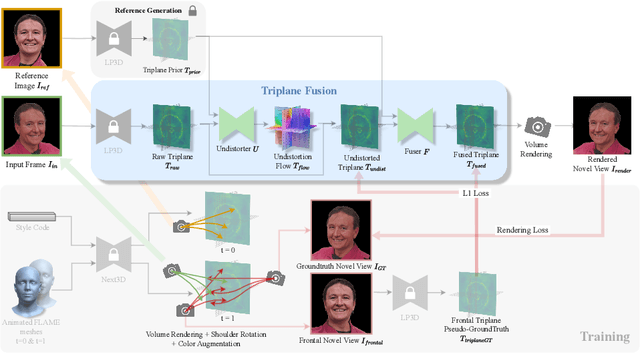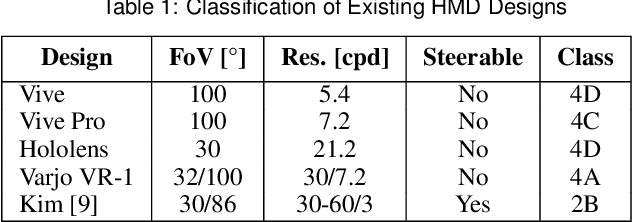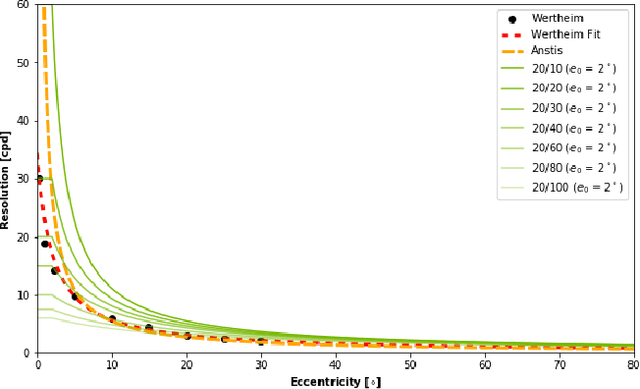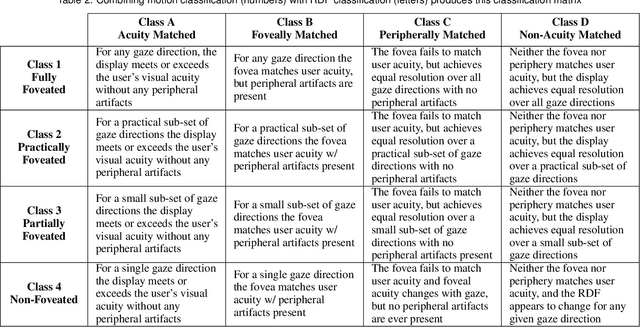Michael Stengel
BLADE: Single-view Body Mesh Learning through Accurate Depth Estimation
Dec 11, 2024



Abstract:Single-image human mesh recovery is a challenging task due to the ill-posed nature of simultaneous body shape, pose, and camera estimation. Existing estimators work well on images taken from afar, but they break down as the person moves close to the camera. Moreover, current methods fail to achieve both accurate 3D pose and 2D alignment at the same time. Error is mainly introduced by inaccurate perspective projection heuristically derived from orthographic parameters. To resolve this long-standing challenge, we present our method BLADE which accurately recovers perspective parameters from a single image without heuristic assumptions. We start from the inverse relationship between perspective distortion and the person's Z-translation Tz, and we show that Tz can be reliably estimated from the image. We then discuss the important role of Tz for accurate human mesh recovery estimated from close-range images. Finally, we show that, once Tz and the 3D human mesh are estimated, one can accurately recover the focal length and full 3D translation. Extensive experiments on standard benchmarks and real-world close-range images show that our method is the first to accurately recover projection parameters from a single image, and consequently attain state-of-the-art accuracy on 3D pose estimation and 2D alignment for a wide range of images. https://research.nvidia.com/labs/amri/projects/blade/
Coherent3D: Coherent 3D Portrait Video Reconstruction via Triplane Fusion
Dec 11, 2024



Abstract:Recent breakthroughs in single-image 3D portrait reconstruction have enabled telepresence systems to stream 3D portrait videos from a single camera in real-time, democratizing telepresence. However, per-frame 3D reconstruction exhibits temporal inconsistency and forgets the user's appearance. On the other hand, self-reenactment methods can render coherent 3D portraits by driving a 3D avatar built from a single reference image, but fail to faithfully preserve the user's per-frame appearance (e.g., instantaneous facial expression and lighting). As a result, none of these two frameworks is an ideal solution for democratized 3D telepresence. In this work, we address this dilemma and propose a novel solution that maintains both coherent identity and dynamic per-frame appearance to enable the best possible realism. To this end, we propose a new fusion-based method that takes the best of both worlds by fusing a canonical 3D prior from a reference view with dynamic appearance from per-frame input views, producing temporally stable 3D videos with faithful reconstruction of the user's per-frame appearance. Trained only using synthetic data produced by an expression-conditioned 3D GAN, our encoder-based method achieves both state-of-the-art 3D reconstruction and temporal consistency on in-studio and in-the-wild datasets. https://research.nvidia.com/labs/amri/projects/coherent3d
Coherent 3D Portrait Video Reconstruction via Triplane Fusion
May 01, 2024



Abstract:Recent breakthroughs in single-image 3D portrait reconstruction have enabled telepresence systems to stream 3D portrait videos from a single camera in real-time, potentially democratizing telepresence. However, per-frame 3D reconstruction exhibits temporal inconsistency and forgets the user's appearance. On the other hand, self-reenactment methods can render coherent 3D portraits by driving a personalized 3D prior, but fail to faithfully reconstruct the user's per-frame appearance (e.g., facial expressions and lighting). In this work, we recognize the need to maintain both coherent identity and dynamic per-frame appearance to enable the best possible realism. To this end, we propose a new fusion-based method that fuses a personalized 3D subject prior with per-frame information, producing temporally stable 3D videos with faithful reconstruction of the user's per-frame appearances. Trained only using synthetic data produced by an expression-conditioned 3D GAN, our encoder-based method achieves both state-of-the-art 3D reconstruction accuracy and temporal consistency on in-studio and in-the-wild datasets.
Real-Time Radiance Fields for Single-Image Portrait View Synthesis
May 03, 2023



Abstract:We present a one-shot method to infer and render a photorealistic 3D representation from a single unposed image (e.g., face portrait) in real-time. Given a single RGB input, our image encoder directly predicts a canonical triplane representation of a neural radiance field for 3D-aware novel view synthesis via volume rendering. Our method is fast (24 fps) on consumer hardware, and produces higher quality results than strong GAN-inversion baselines that require test-time optimization. To train our triplane encoder pipeline, we use only synthetic data, showing how to distill the knowledge from a pretrained 3D GAN into a feedforward encoder. Technical contributions include a Vision Transformer-based triplane encoder, a camera data augmentation strategy, and a well-designed loss function for synthetic data training. We benchmark against the state-of-the-art methods, demonstrating significant improvements in robustness and image quality in challenging real-world settings. We showcase our results on portraits of faces (FFHQ) and cats (AFHQ), but our algorithm can also be applied in the future to other categories with a 3D-aware image generator.
Toward Standardized Classification of Foveated Displays
May 03, 2019



Abstract:Emergent in the field of head mounted display design is a desire to leverage the limitations of the human visual system to reduce the computation, communication, and display workload in power and form-factor constrained systems. Fundamental to this reduced workload is the ability to match display resolution to the acuity of the human visual system, along with a resulting need to follow the gaze of the eye as it moves, a process referred to as foveation. A display that moves its content along with the eye may be called a Foveated Display, though this term is also commonly used to describe displays with non-uniform resolution that attempt to mimic human visual acuity. We therefore recommend a definition for the term Foveated Display that accepts both of these interpretations. Furthermore, we include a simplified model for human visual Acuity Distribution Functions (ADFs) at various levels of visual acuity, across wide fields of view and propose comparison of this ADF with the Resolution Distribution Function of a foveated display for evaluation of its resolution at a particular gaze direction. We also provide a taxonomy to allow the field to meaningfully compare and contrast various aspects of foveated displays in a display and optical technology-agnostic manner.
 Add to Chrome
Add to Chrome Add to Firefox
Add to Firefox Add to Edge
Add to Edge